Helicopter aerodynamics: Have you ever wondered how helicopters, with their rotor systems and single rotor blades, defy gravity and glide through the sky with such grace?
It all comes down to the fascinating world of helicopter aerodynamics.
Which delves into the intricate mechanics behind how these incredible flying machines maneuver through the air in hovering flight and take advantage of the ground effect.
Understanding aerodynamics, hovering flight, and rotor systems is paramount for ensuring both safety and efficiency in helicopters.
Unlike fixed-wing aircraft or planes, helicopters possess a unique design that enables them to perform vertical takeoffs and landings using single rotor blades.
But what exactly makes this possible?
Helicopter aerodynamics involves a complex interplay between rotor blades, wingtip vortices, and the surrounding airflow.
These blades generate lift, one of the primary aerodynamic forces responsible for keeping helicopters airborne in hovering flight.
However, lift isn’t the only force at play; drag, thrust, and air resistance also come into play.
Additionally, helicopters experience ground effect, which is different from fixed wing planes.
The science of helicopter aerodynamics encompasses various factors that affect flight performance, including rotor systems and single rotor blades.
From analyzing aerodynamic conditions to calculating precise aerodynamic forces, every aspect contributes to achieving stability and control in flight.
Additionally, ground effect and rotor speed play crucial roles in helicopter aerodynamics.
We’ll explore how different forces interact during flight, examine key principles involved in helicopter movement.
Rotor systems, and uncover fascinating insights about this dynamic field.
So buckle up as we embark on an exhilarating journey through the skies of helicopter aerodynamics!
Get ready to discover how these magnificent machines conquer gravity with finesse while navigating complex air currents.
From hovering flight to fixed wing planes, the rotor system plays a pivotal role in the revolution of helicopter technology.

Explaining the Principles of Helicopter Flight
Helicopters are fascinating machines that defy gravity and soar through the air. But have you ever wondered how they achieve lift?
It all comes down to the principles of helicopter aerodynamics.
When a helicopter’s rotor blades spin, they create a pressure difference between the top and bottom surfaces of the blades, resulting in lift.
This pressure difference is influenced by centrifugal force, vortex, revolution, and altitude, similar to how an airplane wing works.
To understand the concept of aerodynamic conditions better, imagine holding your hand out of a moving car’s window at a certain altitude.
If you tilt your hand slightly upwards, you’ll feel an upward force pushing against it.
This force is caused by the air flowing over your hand at different speeds, creating a pressure differential.
The same principle applies to helicopter rotor blades, which experience translational lift during each revolution.
The shape of the rotor blades is specially designed to take advantage of the aerodynamic force and pressure difference created by the relative wind.
The curved shape on top and flatter shape underneath helps generate lift as the rotor spins through the air under specific aerodynamic conditions.
By adjusting the angle or pitch of each blade individually using cyclic control, pilots can precisely control the direction in which the helicopter moves.
Unlike fixed wing planes.
Forward Motion and Tilting Rotor Discs
While helicopters, fixed wing planes can hover in one place like magic, they can also move forward with grace and agility.
To achieve forward motion, pilots tilt the main rotor disc forward slightly, changing the direction of thrust generated by each blade as it rotates through its circular path.
The aerodynamic force and relative wind play a crucial role in the flow of the aircraft. Think about how you would throw a paper airplane:
if you want it to fly straight ahead instead of simply falling to the ground, you would give it a slight push forward while releasing it into flight.
Similarly, when a pilot tilts a helicopter’s main rotor disc forward, it changes where each blade meets resistance as it slices through the air during rotation.
The fixed wing of the paper airplane helps maintain stability in its flight.
The relative wind determines the aerodynamic forces acting on the aircraft. The figure of the helicopter’s main rotor disc affects its performance in different flight conditions.
The flow rate of air passing over the wings or rotor blades influences lift and control.
By altering this resistance pattern across all blades simultaneously using collective pitch control, pilots can increase or decrease overall lift generated by their rotors.
This adjustment in lift allows the helicopter, as well as fixed wing planes, to maintain a steady altitude while transitioning from hover to forward flight or vice versa.
The relative wind generated by the rotor blades helps the helicopter or plane stay airborne and counteract the force of gravity from the ground.
Balancing Weight and Lift for Hovering
Hovering is one of the most impressive feats helicopters and fixed-wing planes can accomplish.
To stay perfectly still in mid-air, a helicopter or plane must balance its weight with an equal amount of lift generated by its rotors or wings.
Achieving this equilibrium requires precise control over the rotor blades’ pitch angles and power settings, as well as understanding the figure and relative wind.
Imagine trying to balance a pencil on your fingertip. You need to make constant adjustments to keep it upright and prevent it from falling.
Similarly, when hovering, helicopters constantly adjust their rotor blade pitch angles using cyclic control to counteract any changes in wind speed or direction that could affect their stability.
In contrast, fixed wing planes rely on air resistance to maintain their stability and prevent them from falling out of the sky.
The collective pitch control also plays a crucial role in a plane.
By simultaneously changing the pitch angle on all rotor blades, pilots can increase or decrease overall lift as needed in a fixed-wing aircraft.
This fine-tuning allows them to counteract variations in weight caused by factors such as fuel consumption or passenger movements during flight.
While also considering air resistance and the effects of the relative wind.
Precise Control with Cyclic Control
One of the remarkable aspects of helicopter flight is the ability to maneuver with incredible precision in different directions.
This level of control is made possible by the cyclic control system, which adjusts the pitch angle of each rotor blade individually.
In contrast to fixed wing planes, helicopters rely on their rotor disc to generate lift and control their movement.
The relative wind plays a crucial role in allowing helicopters to maintain stability and perform complex maneuvers.
Think about how you would steer a bicycle: if you want to turn left, you would tilt your handlebars slightly to the left while maintaining balance.
In a similar way, when a pilot moves the cyclic control stick forward, backward, left, or right.
It alters the pitch angle of each rotor blade accordingly within the relative wind and the disc region.
By adjusting these angles independently during rotation, pilots can create varying amounts of lift on different parts of the rotor disc at any given time.
This differential lift enables helicopters to move laterally and perform complex maneuvers like banking turns or flying sideways with finesse.
Additionally, by considering the relative wind, pilots can optimize the lift generated by the rotor blades.
The retreating blade, which operates in a region of lower relative wind, requires adjustments to maintain balance and stability.
These adjustments are crucial for the helicopter to maintain its figure during flight.
Also see: Homebuilt Helicopter Kit

Understanding the Three Axes of Flight in Helicopters
Helicopters are incredible machines that can maneuver through the air in ways that fixed-wing aircraft cannot.
This ability is made possible by understanding and harnessing the three axes of flight – pitch, roll, and yaw.
The rotor system allows helicopters to generate lift and control their movement.
By manipulating the rotor blades’ pitch, helicopters can change their angle of attack and adjust their lift force.
This enables them to hover, ascend, descend, or move in any desired direction.
Additionally, helicopters rely on the figure of their fuselage and the relative wind to maintain stability and control.
These factors play a crucial role in ensuring safe flight within a specific region.
1. Pitch: Controlling Forward or Backward Movement
Pitch refers to the rotation around an axis running from nose to tail, which enables helicopters to control their forward or backward movement.
By adjusting the angle of attack on the main rotor blades, pilots can alter the lift generated by each blade as it rotates through its circular path in relation to the relative wind.
This variation in lift creates a force imbalance that tilts the aircraft forward or backward, forming a figure in the region.
Imagine you’re sitting in a helicopter cockpit with your hands on the controls.
As you push forward on the cyclic control stick, you increase the pitch angle of the rotor blades during each revolution.
This increased pitch generates more lift at the front of the helicopter than at its rear, causing it to tilt forward and move in that direction relative wind.
Conversely, pulling back on the cyclic decreases pitch at each revolution’s front end, resulting in backward movement figure.
2. Roll: Banking and Tilting Movements
Roll involves rotation around a rotor system axis running from wingtip to wingtip and controls banking or tilting movements of a helicopter in the figure.
While most people associate rolling motions with fixed-wing aircraft during turns, helicopters can also perform this maneuver thanks to their unique design and the relative wind in the region.
To visualize wind roll in action, picture yourself once again inside a helicopter cockpit. As you push left or right on your cyclic control stick.
You adjust the angle of attack for one side’s rotor blades while simultaneously decreasing it for those on the opposite side in order to control the figure of the helicopter.
This alteration in lift distribution causes the helicopter to lean or bank in the desired direction, creating a dynamic effect in the region surrounding the aircraft.
For example, if you want to execute a right turn, you would push the cyclic control stick to the right.
The increased lift on the left side and decreased lift on the right side of the rotor disc create a rolling motion that tilts the helicopter to the right.
This banking action initiates a coordinated turn as air flows differently over each wing plane in that region.
3. Yaw: Mastering Left and Right Turns
Yaw is all about rotation around an axis running vertically through the aircraft’s centerline, allowing helicopters to make left or right turns.
Unlike fixed-wing aircraft that rely on rudders for yaw control, helicopters use their tail rotor or anti-torque system to counteract torque generated by their main rotor’s rotation.
In this figure, the region of yaw control can be clearly seen. Imagine yourself back in that helicopter cockpit once more.
As you twist your foot pedals, you adjust the pitch angle of the tail rotor blades.
By increasing or decreasing this pitch, you can either enhance or reduce its thrust force. When this happens.
Newton’s third law comes into play – for every action (thrust), there is an equal and opposite reaction (torque) in the figure and region.
Let’s say you want to figure out how to make a left turn while hovering in mid-air.
By applying more pressure with your left foot on the pedal, you can increase tail rotor pitch and subsequently its thrust force.
This enhanced thrust counters and overcomes torque from the main rotor’s rotation, causing a yawing motion that turns your helicopter smoothly to the left in the region.

The Influence of Angle of Attack, Tilt, and Rotor Blades in Helicopter Aerodynamics
The angle of attack plays a crucial role in helicopter aerodynamics as it determines how much lift is generated by each rotor blade at a given airspeed.
Think of the angle of attack as the figure between the rotor blade’s chord line (a straight line connecting the leading and trailing edge) and the oncoming airflow.
By adjusting this angle, helicopter pilots can control the amount of lift produced in the region.
When the angle of attack is too small, not enough lift is generated to keep the helicopter airborne in the figure region.
On the other hand, if it becomes too high, the airflow over the rotor blades in the region becomes turbulent, resulting in decreased lift efficiency and increased drag.
Therefore, finding an optimal balance in this region is essential for efficient flight.
Tilting for Control: Maneuverability in Forward Flight
In addition to adjusting the angle of attack, helicopters can also tilt their main rotor disc to achieve directional control during forward flight or hovering with crosswinds.
This tilting action allows them to change their rotation direction and influence their movement in a certain figure or region.
By tilting slightly forward during forward flight, helicopters can generate thrust that propels them through the air.
This adjustment helps counteract drag forces and maintain forward momentum. Similarly, when hovering with crosswinds or performing lateral movements.
Tilting the rotor system allows pilots to counteract these external influences and maintain stability in the figure of a helicopter.
Additionally, this adjustment helps pilots control the helicopter’s movement within a specific region.
Optimized Rotor Blades: Efficient Lift Generation
Rotor blades are meticulously designed with specific airfoil shapes optimized for generating lift efficiently at various angles of attack.
These airfoil shapes are carefully engineered to minimize drag while maximizing lift production in the figure region.
The shape and curvature of rotor blades influence how they interact with airflow during rotation.
The design takes into account factors such as wingtip vortices (the swirling patterns created by rotating blades).
Ground effect (the increased lift experienced when flying close to the ground).
Translational lift (the additional lift generated when the helicopter moves forward), figure, and region.
By considering these factors, rotor blades are designed to produce sufficient lift while minimizing energy expenditure.
This allows helicopters to achieve stable flight and maneuverability with maximum efficiency in the figure and region.
Pitch Angle: Controlling Lift and Thrust
Changes in rotor blade pitch significantly affect the amount of lift and thrust produced by the helicopter.
The pitch angle refers to the angle at which each rotor blade’s camber line (a line connecting the leading edge to the trailing edge) is set relative to its rotation plane.
A figure can be used to illustrate this concept.
When a pilot increases the pitch angle, more lift is generated by the rotor system, allowing for ascent or maintaining altitude.
Conversely, decreasing the pitch angle reduces lift and facilitates descent.
By adjusting individual blade pitch angles collectively or differentially, pilots can control both vertical movement and forward speed, thus manipulating the figure of the aircraft.
Maintaining coordinated control of both tilt and pitch angles, as well as the rotor system, is essential for stable flight.
Failure to coordinate these angles properly can lead to imbalances, compromising safety and maneuverability.
Additionally, ensuring proper coordination of these angles is crucial for maintaining a stable figure during flight.
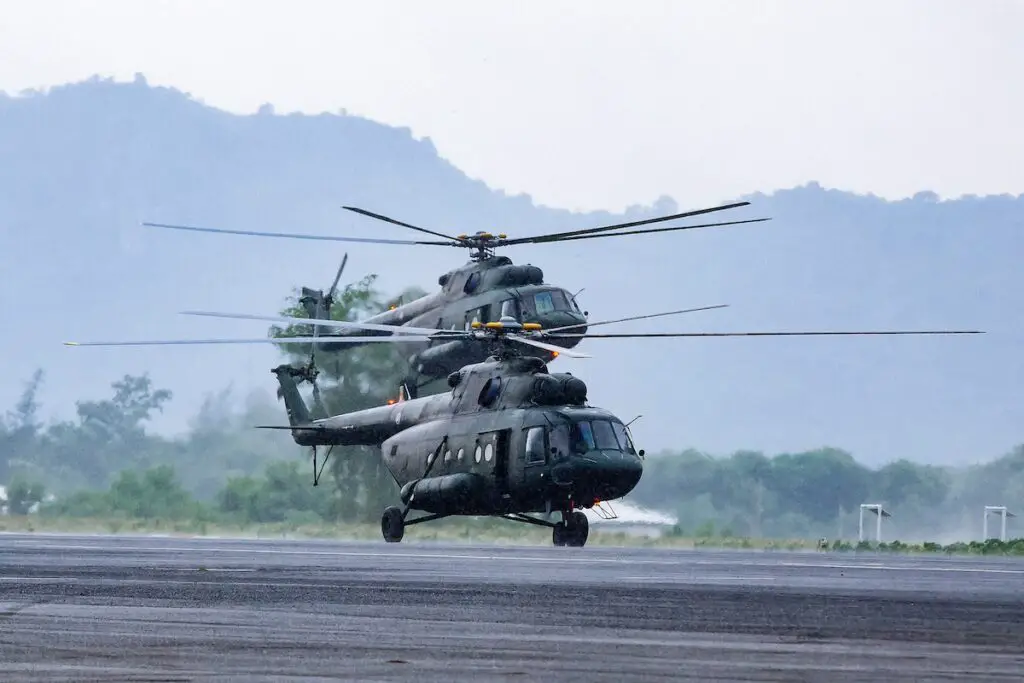
Role of Tail Rotor and Torque in Helicopter Control
The main rotor of a helicopter generates an incredible amount of torque as it spins.
This figure of torque tends to make the helicopter rotate in the opposite direction, which can lead to uncontrollable spinning if left unaddressed.
Thankfully, the tail rotor is there to save the day. The primary role of the tail rotor is to figure counteract the torque produced by the main rotor.
By spinning in a different direction, it creates an opposing force that prevents the helicopter from spinning out of control.
Think of it as a balancing act between these two rotors – one generating torque while the other counteracts it.
Controlling Yaw and Maintaining Stability
Besides countering torque, the tail rotor also plays a crucial role in controlling yaw and maintaining stability during flight.
Yaw refers to the rotation or movement of an aircraft around its vertical axis. In simpler terms, it’s when a helicopter turns left or right.
Additionally, the figure of the tail rotor helps in achieving this control.
Pilots adjust the pitch (angle) of the tail rotor blades to control yaw.
By increasing or decreasing this pitch, they can influence how much anti-torque force is generated by the tail rotor.
This allows them to balance out any unwanted rotational movement caused by changes in engine power or other factors.
Additionally, pilots can use the figure of the tail rotor blades to fine-tune their control over yaw.
Proper coordination between inputs from both main and tail rotors is essential for balanced flight control.
Pilots must carefully manage their collective and cyclic inputs on both systems to maintain stability and ensure smooth maneuvering through various flight conditions.
It is crucial for pilots to figure out the optimal balance between the inputs.
Designing for Anti-Torque Force
Tail rotors are typically smaller than main rotors and have a different figure design specifically aimed at providing adequate anti-torque force.
The size difference ensures that more power can be directed towards generating lift rather than combating torque.
Tail rotors often have variable pitch mechanisms that allow pilots to fine-tune their control over yaw.
This flexibility enables them to adapt to different flight situations and maintain stability even in challenging conditions.
The figure of the helicopter’s tail rotor is crucial for precise control.
The rotor hub, which connects the tail rotor blades to the helicopter’s structure, is designed to withstand the forces generated during operation.
It must be robust enough to handle the stresses caused by rapid changes in pitch and rotational speeds.
The figure of the rotor hub is crucial in ensuring its strength and durability.
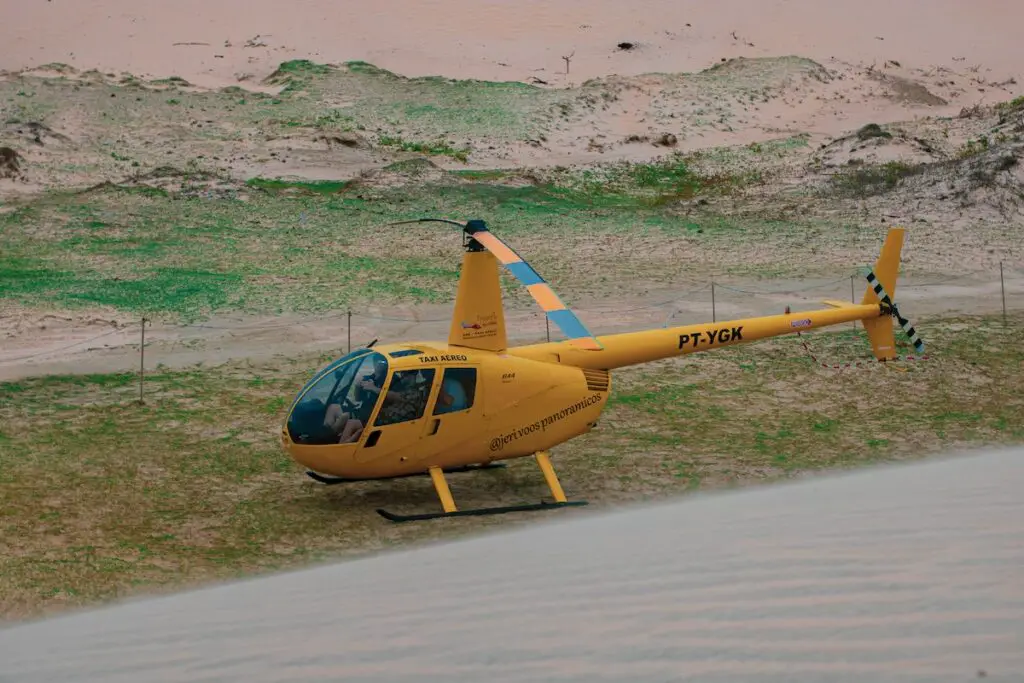
Comparing Helicopter Controls to Airplane Controls
Helicopters are unique aircraft that have the ability to move precisely in any direction.
Unlike airplanes, which rely on elevators, ailerons, and rudders for control, helicopters utilize cyclic controls.
The cyclic control is a joystick-like mechanism located between the pilot’s legs.
When the pilot moves the cyclic control figure forward or backward, it tilts the main rotor disc of the helicopter relative to its axis of rotation.
This figure tilt allows the helicopter to move forward or backward along its longitudinal axis.
Similarly, when the pilot moves the cyclic control to the right or left, it tilts the main rotor disc laterally, enabling lateral movement in those respective directions.
Essentially, by manipulating the cyclic controls, pilots can figure maneuver helicopters with great precision and agility.
Collective Pitch Control for Overall Lift Adjustment
While airplanes rely on throttle controls to adjust engine power and consequently alter lift, helicopters use collective pitch controls instead.
The collective pitch control is typically located on the left side of a helicopter’s cockpit and resembles a lever or a twist grip throttle.
When adjusted upward or downward by the pilot, it changes all rotor blades’ pitch simultaneously.
By increasing collective pitch (pulling up), more lift is generated as each rotor blade bites into more air during rotation.
Conversely, decreasing collective pitch (pushing down) reduces lift by reducing each blade’s angle of attack.
This adjustment allows helicopters to ascend or descend vertically without changing their attitude.
Different Control Mechanisms: Cyclic vs Elevators/Ailerons/Rudders
In addition to cyclic and collective controls, helicopters also employ anti-torque pedals as part of their control mechanisms.
These pedals are usually located at foot level within reach of both pilot’s feet and serve a critical purpose – counteracting torque produced by the main rotor’s rotation.
Unlike airplanes where yaw control is achieved through the use of rudders, helicopters rely on anti-torque pedals to adjust the pitch of the tail rotor.
By applying pressure to the left pedal, the pitch of the tail rotor blades increases, causing the helicopter’s nose to yaw to the right.
Conversely, pressing on the right pedal increases pitch in the opposite direction, resulting in a yaw to the left.
It’s important to note that while airplanes have separate controls for elevators (pitch), ailerons (roll), and rudders (yaw).
Helicopters combine these functions into a single control system.
The cyclic control allows for adjustments in both roll and pitch simultaneously, while collective and anti-torque pedals take care of lift adjustment and yaw control respectively.
Transitioning Between Fixed-Wing Aircraft and Helicopters
Understanding the differences between helicopter controls and airplane controls, specifically the rotor system, is crucial when transitioning between these two types of aircraft.
Pilots accustomed to flying fixed-wing planes may initially find it challenging to adapt their muscle memory and coordination skills when operating helicopters.
The transition from controlling an airplane solely with yoke or stick inputs to manipulating cyclic controls and rotor system can be disorienting at first.
Using collective pitch controls instead of throttle controls and rotor system requires an adjustment in mindset regarding lift management.
However, with practice and training, pilots can become proficient in handling both fixed-wing aircraft and helicopters.
The key lies in recognizing that while there are fundamental differences in control mechanisms, they ultimately serve similar purposes – maintaining stability during flight.
Additionally, pilots must also understand the intricacies of the rotor system in helicopters.
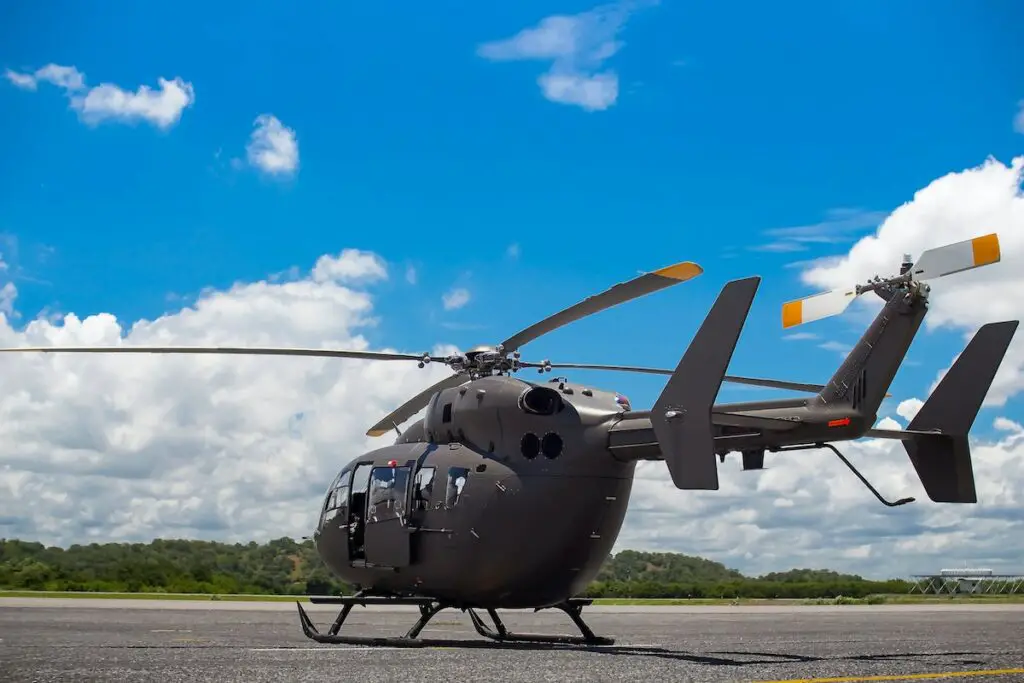
Key Differences Between Helicopters and Airplanes: An In-depth Analysis
Helicopters possess a unique capability that sets them apart from airplanes – the ability to take off and land vertically using their rotor system.
Unlike airplanes, which rely on long runways for their takeoff and landing procedures, helicopters can ascend and descend directly from any suitable surface.
This vertical takeoff feature allows helicopters to operate in confined spaces such as helipads, rooftops, or even remote areas where runways are not available.
Lift Generation: Rotating Blades vs. Wings
One of the fundamental distinctions between helicopters and airplanes lies in how they generate lift.
While airplanes primarily rely on their wings to create lift by exploiting the Bernoulli’s principle, helicopters adopt an entirely different approach.
Helicopters utilize rotating blades or rotor systems to generate lift by creating a difference in air pressure above and below the rotor blades.
By adjusting the pitch angle of the blades, helicopters can control both lift and thrust, enabling them to maneuver in various directions with great precision.
Hovering and Unique Maneuverability
The ability to hover is another characteristic that sets helicopters apart from airplanes.
Due to their design features such as cyclic pitch control and tail rotors (or alternative anti-torque systems), helicopters can maintain a stationary position mid-air.
This hovering capability proves invaluable in situations where precise positioning or prolonged aerial observation is required.
Such as search-and-rescue operations or military reconnaissance missions.
Moreover, unlike fixed-wing aircraft like planes that predominantly move forward during flight, helicopters enjoy greater maneuverability options.
They can fly backward or sideways thanks to their unique control mechanisms that allow pilots to alter the blade angles individually through cyclic control inputs.
This maneuverability, facilitated by the rotor system, makes helicopters highly versatile machines capable of performing tasks that would be impossible for traditional airplanes.
Cruising Speeds: Streamlined Fuselage vs. Rotor Drag
Airplanes generally outperform helicopters. The streamlined design of airplane fuselages reduces drag, enabling them to achieve higher velocities with greater efficiency.
On the other hand, helicopters face a significant challenge in overcoming rotor drag, which limits their top speed potential.
While some advanced helicopter models can reach impressive speeds, they still fall short compared to airplanes.
Fuel Efficiency: Fixed-Wing vs. Rotary-Wing
In terms of fuel efficiency, fixed-wing aircraft have a clear advantage over helicopters.
The design of airplanes allows for more efficient use of fuel due to their ability to glide and maintain forward momentum without constant power input.
This characteristic makes planes ideal for long-distance travel or missions that require extended flight durations.
Helicopters, however, consume more fuel due to the continuous power required to rotate their rotor system and maintain lift.
Also see: How Much Does It Cost To Build A Helicopter?
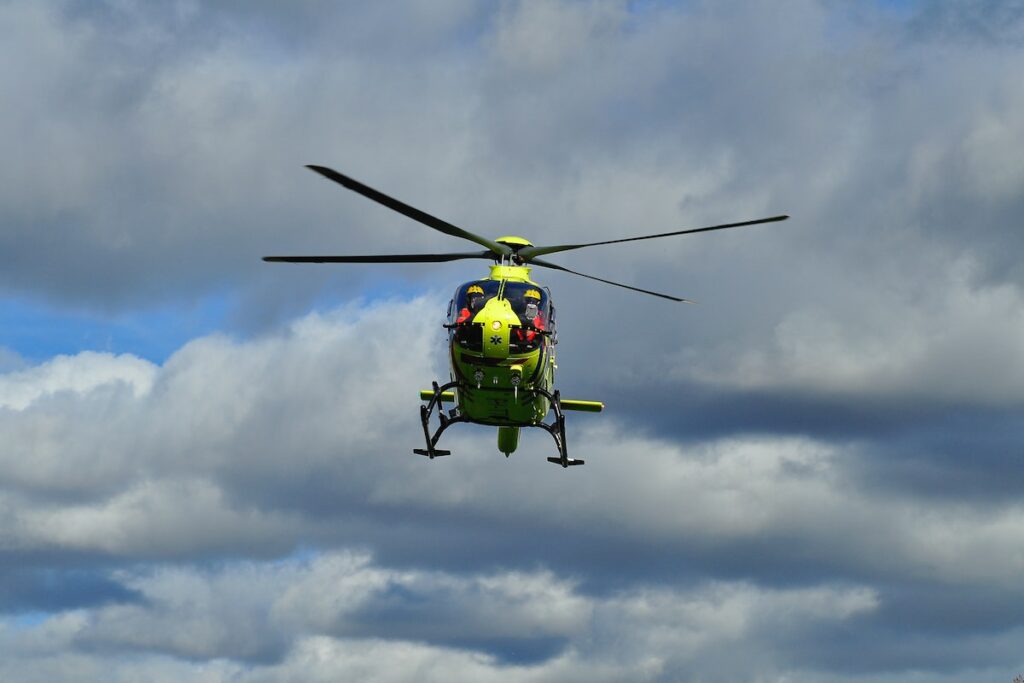
Exploring the Speed, Altitude, and Mechanics of Helicopter Flight
Helicopters are incredibly versatile aircraft that can fly at a wide range of speeds.
The maximum speed that a helicopter can achieve is dependent on several factors, including its rotor blade design and engine power.
Different types of helicopters have varying capabilities.
For example, some military helicopters are designed for high-speed operations and can reach impressive velocities.
The Eurocopter Tiger, for instance, has a top speed of around 196 knots (225 mph), allowing it to quickly cover long distances during combat missions.
On the other hand, there are also helicopters specifically built for slower speeds.
These types of helicopters are often used in search and rescue operations or for providing aerial tours. They prioritize stability and maneuverability over sheer velocity.
Helicopters Are Capable of Flying at Low Altitudes
One of the unique advantages of helicopters is their ability to fly at low altitudes.
Unlike fixed-wing aircraft that require long runways for takeoff and landing, helicopters can operate in confined areas or urban environments with limited space.
This capability makes them invaluable in various fields such as emergency medical services (EMS) where quick access to remote or hard-to-reach locations is crucial.
Helicopter pilots trained in hovering flight techniques can land safely even in challenging conditions.
Flying at low altitudes also allows pilots to closely observe their surroundings, which is particularly useful in law enforcement or surveillance operations.
By maintaining a lower altitude, they can maintain visual contact with targets on the ground while minimizing the risk of detection from above.
The Mechanics of Helicopter Flight Involve Balancing Lift, Weight, Thrust, and Drag
To understand how a helicopter stays airborne and maintains stable flight conditions, we need to delve into its mechanics.
Four fundamental forces come into play: lift, weight, thrust, and drag.
Lift is generated by the rotor blades as they spin through the air. It opposes the force of gravity (weight) and keeps the helicopter aloft.
By tilting the rotor blades slightly forward or backward, pilots can control the direction of flight. Thrust is produced by the engine-driven rotor system.
It propels the helicopter forward and counteracts drag, which is caused by air resistance against its movement through the atmosphere.
Balancing these forces is crucial for maintaining stability during flight.
Helicopter pilots continuously adjust their controls to manipulate these forces and achieve desired flight characteristics.
For example, increasing engine power increases lift and allows for vertical ascent or acceleration in a forward direction.
Different Types of Helicopters Have Varying Capabilities
Not all helicopters are created equalAltitude range, and payload capacity. Different designs cater to specific purposes and operational requirements.
For instance, light utility helicopters like the Bell 206 JetRanger have a maximum speed of around 130 knots (150 mph) and can carry up to five passengers.
These helicopters are commonly used for aerial photography, news reporting.
Or private transportation due to their versatility and relatively lower cost compared to larger models.
On the other end of the spectrum are heavy-lift helicopters such as the Mil Mi-26.
With a top speed of approximately 150 knots (173 mph), these giants can transport massive payloads weighing up to 20 metric tons.
They excel in tasks such as airlifting heavy machinery or delivering supplies to remote locations with limited infrastructure.
It’s essential for helicopter pilots to understand their aircraft’s capabilities fully.
This knowledge enables them to make informed decisions during flight planning and ensures optimal performance under various conditions.
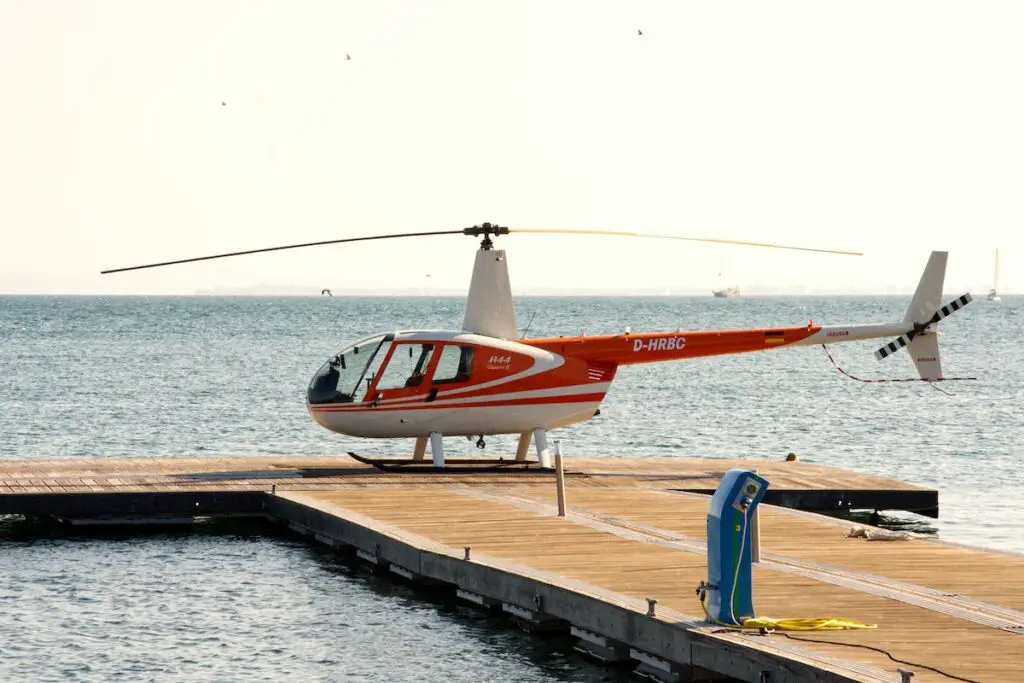
Unraveling the Coriolis Effect and Transverse Flow Effect in Helicopter Aerodynamics
The Coriolis effect is a fascinating phenomenon that comes into play when a helicopter’s rotor blades are in motion.
As the blades rotate, they experience different airspeeds at various points during their rotation.
This variation occurs due to the influence of the Earth’s rotation on the movement of air particles.
To understand this effect better, imagine yourself standing on a spinning carousel.
As you move towards the outer edge, your speed relative to someone standing still on the ground increases.
Similarly, if you move towards the center of the carousel, your speed decreases compared to an observer on solid ground.
In helicopter aerodynamics, this difference in airspeed becomes significant because each rotor blade experiences varying speeds as it rotates around the central hub.
The advancing blade moves faster through the air than its counterpart, known as the retreating blade.
This discrepancy creates unique challenges for pilots during flight maneuvers.
The Transverse Flow Effect: Lift Distribution Anomalies
Another crucial aspect of helicopter aerodynamics is the transverse flow effect.
This term refers to an uneven distribution of lift along the rotor blades caused by dissimilar airflow patterns.
Understanding this effect is essential for maintaining stability and control during flight.
As a helicopter hovers or flies forward, it generates lift by creating vortices with its rotating blades. These vortices induce an upward force called lift.
However, due to factors such as gyroscopic precession and centrifugal force, this lift is not evenly distributed across all sections of each rotor blade.
The result is that one part of each blade receives more lift than another section at any given moment during flight.
This imbalance can affect how a helicopter responds to pilot inputs and influences its overall maneuverability.
Impact on Stability and Control
Both the Coriolis effect and transverse flow effect can have a significant impact on helicopter stability and control.
Pilots must be aware of these phenomena to anticipate changes in handling characteristics during flight.
For example, when a pilot applies cyclic input to tilt the rotor disc forward, the Coriolis effect comes into play.
The advancing blade experiences an increase in airspeed due to its rotation direction, while the retreating blade encounters a decrease in airspeed.
This difference can lead to an imbalance in lift distribution and affect the helicopter’s pitch attitude.
Similarly, during certain flight maneuvers, such as quick stops or hovering turns, pilots need to account for the transverse flow effect.
As the helicopter changes its direction or speed, different parts of each rotor blade experience varying relative wind speeds and angles.
This variation affects lift distribution and can influence the helicopter’s response to control inputs.
Precise Adjustments for Safe Operation
Understanding the Coriolis effect and transverse flow effect is crucial for pilots to make precise adjustments during flight.
By anticipating how these phenomena impact lift distribution and airflow patterns, pilots can ensure safe helicopter operation.
To counteract any adverse effects caused by these aerodynamic factors, pilots may need to adjust their control inputs accordingly.
For instance, they might need to apply additional collective pitch or make subtle cyclic corrections to maintain stability and control throughout various flight maneuvers.
By actively accounting for these effects, pilots enhance their ability to handle helicopters safely and efficiently.
It allows them to make real-time adjustments that compensate for variations in lift distribution and maintain optimal performance.
Also see: Home Built Helicopters
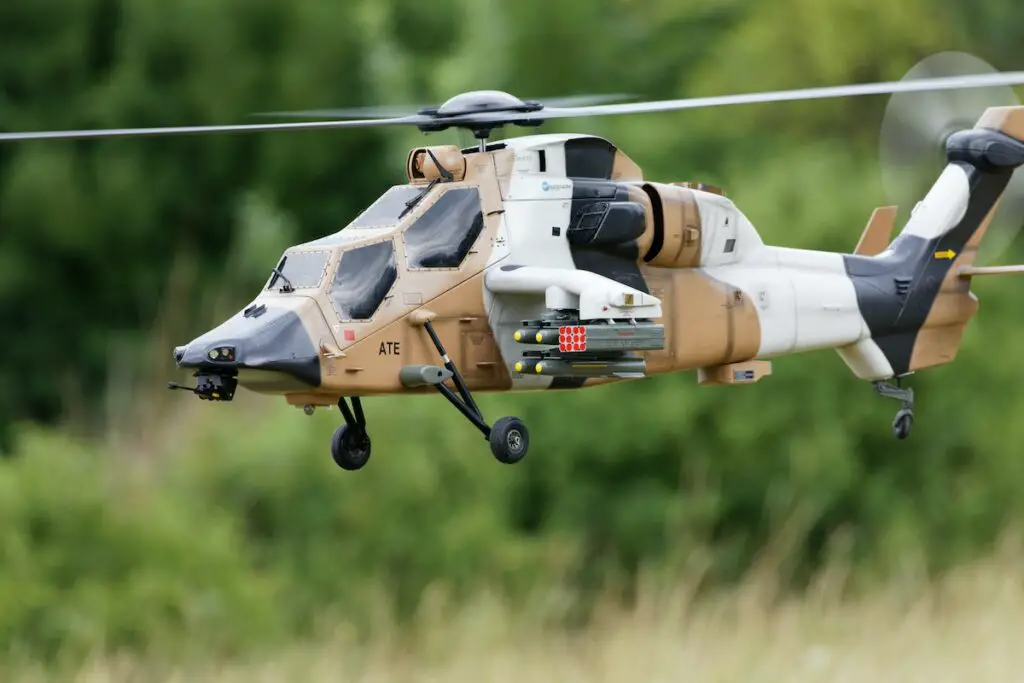
Mastering Autorotation in Vertical and Forward Flight: Essential Techniques for Handling Breakdowns
What is Autorotation?
Autorotation is a crucial technique that helicopter pilots use to safely land the aircraft when engine power is lost.
It involves utilizing the upward airflow generated by either forward movement or descent to keep the rotor blades spinning, providing enough lift for a controlled descent and landing.
The Mechanics of Autorotation
During autorotation, the helicopter’s engine is disengaged, and the pilot relies on the kinetic energy stored in the rotating rotor blades.
As air passes through the rotor disc from below, it creates an upward flow that keeps the blades spinning.
This upward airflow is essential for maintaining lift during autorotation.
Vertical Autorotations: From Hover to Safety
Vertical autorotations are performed when a helicopter loses power while hovering.
In this scenario, mastering specific techniques becomes paramount to ensure a safe landing:
-
Recognizing Engine Failure: The ability to quickly identify engine failure is crucial for initiating an autorotation promptly. Pilots must be vigilant and aware of any signs or symptoms that indicate loss of power.
-
Enter Autorotation: Once engine failure is detected, entering autorotation involves lowering collective pitch while simultaneously applying aft cyclic input to establish a controlled descent.
-
Managing Descent Rate: During vertical autorotations, controlling the rate of descent plays a vital role in ensuring a safe landing. By adjusting collective pitch and cyclic inputs, pilots can regulate their altitude loss effectively.
-
Flare for Landing: As the helicopter approaches the ground during vertical autorotations, executing a well-timed flare maneuver becomes crucial to reduce vertical speed just before touchdown. This requires precise control inputs from pilots.
Forward Autorotations: Transitioning from Flight to Safety
Forward autorotations are performed when a helicopter loses power during forward flight. Maneuvering through this situation demands specific techniques:
-
Recognition and Transition: Detecting engine failure during forward flight requires swift action from the pilot. Recognizing the issue promptly and transitioning into autorotation by lowering collective pitch and applying aft cyclic input is crucial.
-
Retreating Blade Stall: During forward autorotations, helicopters experience a phenomenon called retreating blade stall. This occurs when the speed of the helicopter exceeds the maximum allowable airspeed for autorotation, causing decreased lift on the retreating side of the rotor disc. Pilots must be aware of this effect and take appropriate actions to counter it.
-
Right Roll Effect: Another challenge faced during forward autorotations is the right roll effect caused by torque imbalance due to loss of engine power. Pilots must apply left pedal input to counteract this roll tendency and maintain control.
-
Rearward Autorotation: In certain scenarios, such as high-speed emergencies or critical situations requiring immediate landing, pilots may need to transition from forward flight directly into a rearward autorotation. This technique involves complex maneuvers that demand skillful handling.
The Importance of Training in Autorotation Procedures
Training in autorotation procedures is essential for all helicopter pilots, regardless of their level of experience.
By mastering these techniques, pilots can effectively handle emergency situations where engine failure occurs:
-
Emergency Simulations: Regularly practicing simulated emergency scenarios allows pilots to refine their skills in executing both vertical and forward autorotations.
-
Muscle Memory Development: Through repetitive training sessions, pilots develop muscle memory that enables them to instinctively react during real-life emergencies.
-
Decision-Making Skills: Training also focuses on enhancing decision-making abilities under pressure, ensuring pilots make sound judgments during critical moments.
-
Safety Awareness: Understanding the intricacies of autorotations enhances safety awareness among pilots, enabling them to proactively mitigate risks associated with engine failures.
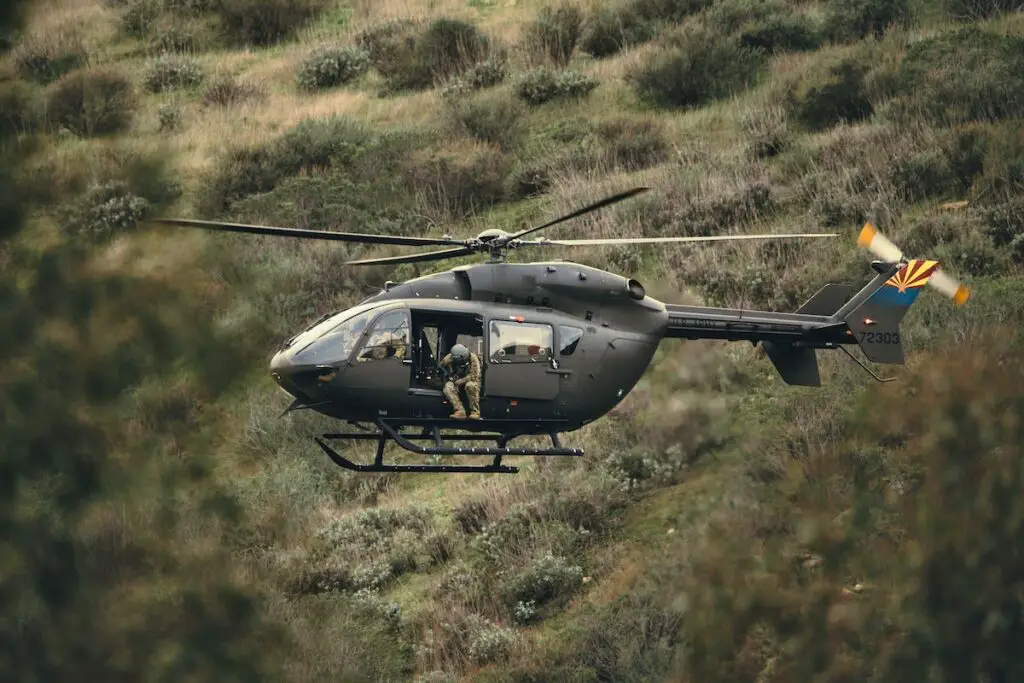
Designing Effective Helicopter Aerodynamics Parameters: Overview and Unique Principles
Designing helicopter aerodynamics parameters involves a complex process of optimizing lift, drag, and stability to meet specific mission requirements.
Every helicopter is designed with a purpose in mind, whether it’s search and rescue operations, military missions, or commercial transport.
To ensure optimal performance, engineers carefully consider various factors that influence aerodynamic performance.
One crucial aspect of designing effective helicopter aerodynamics parameters is the shape of the rotor blades.
The design of these blades plays a significant role in determining how efficiently the helicopter can generate lift and minimize drag.
Engineers experiment with different blade shapes to find the most suitable one for each specific application.
By adjusting the angle of attack and airfoil design of the blades, they can optimize lift production while reducing drag.
Another important consideration in helicopter aerodynamic design is the overall aircraft configuration.
The way components are arranged affects not only the aircraft’s stability but also its ability to generate lift effectively.
Weight distribution plays a critical role in achieving balance during flight.
Engineers carefully analyze where different components should be placed to maintain stability while minimizing any adverse effects on maneuverability.
Factors Influencing Aerodynamic Performance
Helicopter designers take into account several factors when designing aerodynamic parameters.
These factors include weight distribution, center of gravity position, vibration reduction techniques, and even noise reduction strategies.
Weight distribution is particularly crucial as it directly impacts how well a helicopter can stay balanced during flight.
If weight is unevenly distributed across the aircraft’s structure, it can lead to instability and make controlling the helicopter more challenging.
Engineers carefully analyze weight distribution throughout the entire aircraft to ensure optimal balance.
The center of gravity (CG) position is another essential factor that affects both stability and control responsiveness.
Placing the CG too far forward or backward can negatively impact flight characteristics such as maneuverability or controllability.
Helicopter designers meticulously calculate and position the CG to achieve the desired flight characteristics for a specific mission.
Vibration reduction is also a critical consideration in helicopter aerodynamic design.
Vibrations can affect both the comfort of passengers and the structural integrity of the aircraft.
Engineers employ various techniques, such as rotor blade balancing and vibration dampening systems, to minimize vibrations and ensure smooth operation.
The Role of Tail Rotor Design
In helicopter aerodynamics, tail rotor design plays a crucial role in maintaining stable flight control.
One significant challenge helicopters face is countering the torque effect generated by the main rotor’s rotation.
Without proper compensation, this torque would cause the helicopter to spin uncontrollably in the opposite direction of the main rotor’s rotation.
To counteract this torque effect, engineers incorporate a tail rotor into their designs.
The tail rotor generates thrust perpendicular to the main rotor’s rotation, effectively balancing out the torque effect.
By adjusting variables such as tail rotor size, pitch angle, and rotational speed, engineers fine-tune its performance for optimal stability during flight.
Balancing Lift Generation and Power Consumption
Achieving an optimal balance between lift generation and power consumption is a key consideration in helicopter aerodynamic design.
Generating enough lift to keep the aircraft airborne requires power from its engines or rotors.
However, excessive power consumption can lead to decreased efficiency and increased operating costs.
Engineers strive to find a delicate balance between generating sufficient lift while minimizing power requirements.
This involves carefully designing airfoils that provide maximum lift with minimal drag coefficients.
By optimizing airfoil shapes and angles of attack, they can enhance lift production without compromising overall efficiency.
Advancements in technology have allowed for more efficient engine designs that provide better power-to-weight ratios.
These improvements contribute to reducing power consumption while maintaining adequate lift capabilities.
Also see: How To Build A Helicopter At Home?
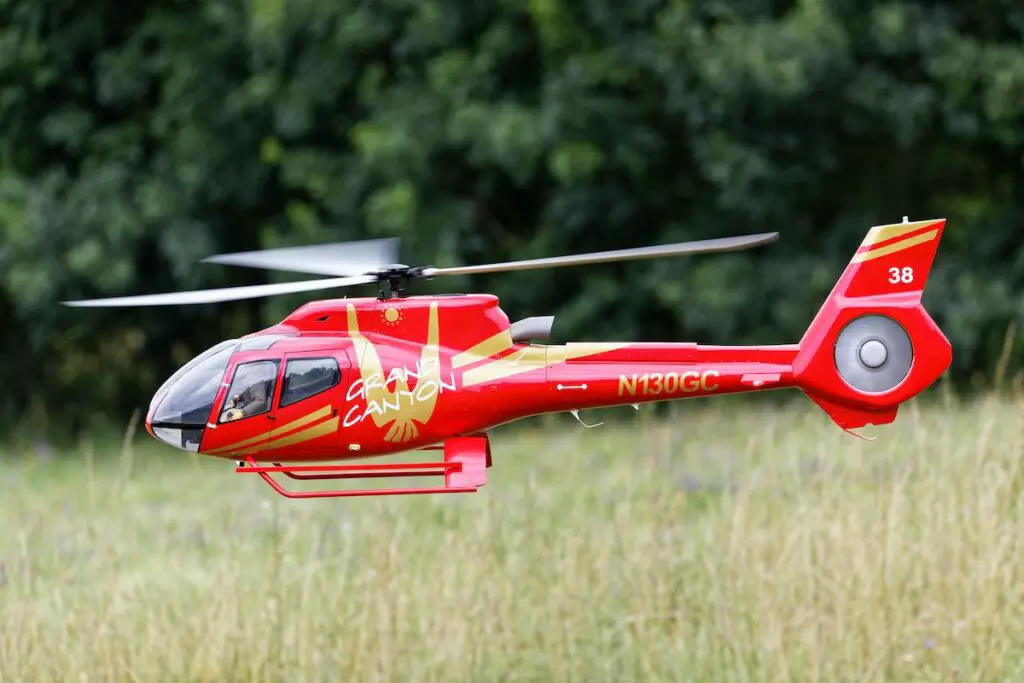
Insights into the Fascinating World of Helicopter Aerodynamics
Helicopter aerodynamics is a constantly evolving field, driven by advancements in technology and ongoing research.
As engineers and scientists delve deeper into the intricacies of helicopter flight, new insights are gained, leading to safer and more efficient operations.
The study of helicopter aerodynamics involves understanding the complex interplay between various factors such as wing design, engine power, and control mechanisms.
One key aspect that sets helicopters apart from fixed-wing aircraft is their ability to hover. This capability is made possible by the principle of lift generated by rotating blades.
Unlike fixed-wing aircraft that rely on forward motion for lift, helicopters generate lift through the rotation of their rotor blades.
This unique feature allows them to maneuver in tight spaces or even hover in mid-air, making them indispensable in industries such as search and rescue or military operations.
Enhancing Efficiency and Performance
Ongoing research in helicopter aerodynamics aims to improve efficiency, reduce noise levels, and enhance overall performance.
One area of focus is reducing drag during forward flight.
Drag is a force that opposes motion through air and can significantly impact fuel consumption and speed.
By optimizing the shape of helicopter components like rotor blades and fuselage, engineers strive to minimize drag and increase efficiency.
Another important aspect is controlling vibrations caused by rotor systems.
Vibrations not only affect passenger comfort but also have an impact on structural integrity over time.
Researchers work on developing advanced damping systems to mitigate these vibrations effectively.
Furthermore, enhancing maneuverability without compromising stability is a crucial goal in helicopter aerodynamics.
Engineers explore innovative ways to optimize blade pitch angles for different flight conditions.
Allowing for precise control while maintaining stability during maneuvers such as turns or climbs.
The Complexity Behind Remarkable Flying Machines
Exploring the world of helicopter aerodynamics reveals the intricate details behind these remarkable flying machines.
Let’s dive into some key concepts that contribute to their flight:
-
Rotor Blades: The main source of lift in helicopters is the rotor blades. These blades are carefully designed to generate sufficient lift as they rotate through the air. They have a unique shape, known as an airfoil, which produces different amounts of lift at various points along its length.
-
Flapping and Feathering: Rotor blades are not rigidly fixed but can flap up and down and feather (rotate) about their span-wise axis. This flexibility allows for adjustments in lift and control during flight, ensuring stability and maneuverability.
-
Downwash: As the rotor blades rotate, they create a downward flow of air called downwash. This downwash contributes to generating lift but also creates challenges such as ground effect, where the helicopter experiences increased lift when flying close to the ground.
-
Tail Rotor: Helicopters feature a tail rotor that counteracts the torque produced by the main rotor’s rotation. By providing an opposing force, it prevents the helicopter from spinning uncontrollably in the opposite direction.
-
Engine Power: The engine power in helicopters is crucial for maintaining altitude and achieving desired speeds. It drives both the main rotor and tail rotor systems while providing sufficient thrust to overcome drag forces.
-
Gyroscopic Precession: When a force is applied to a spinning object like a helicopter rotor blade, it does not instantaneously respond in the direction of that force due to gyroscopic precession. Instead, it responds 90 degrees later in the direction of rotation, leading to unique handling characteristics during maneuvers.
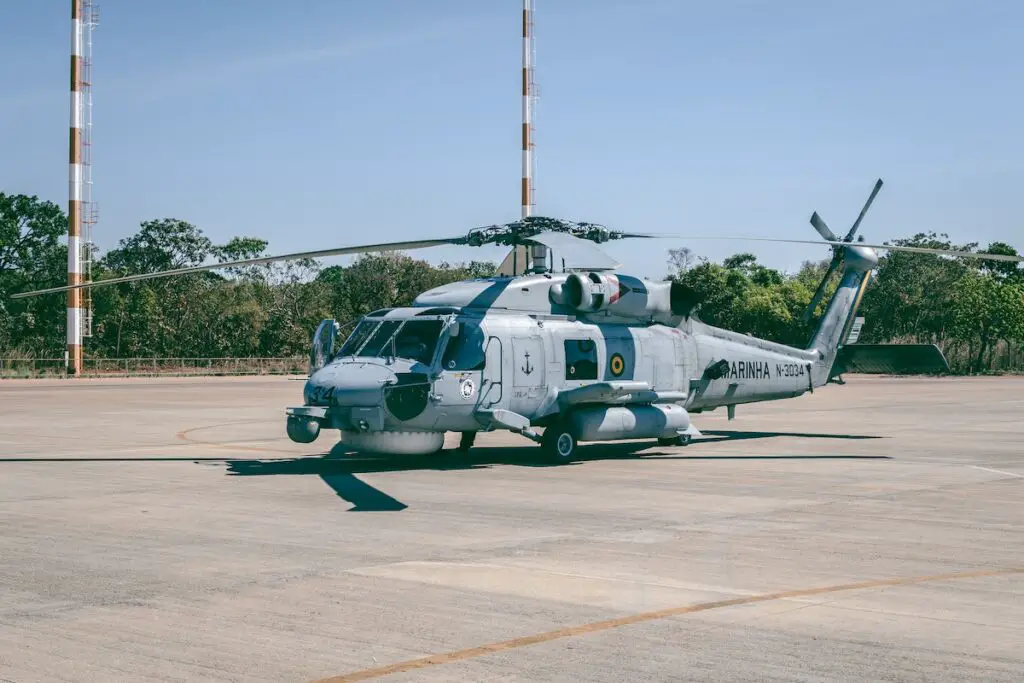
Conclusion
In this comprehensive exploration of helicopter aerodynamics, we have delved into the intricate principles and mechanics that govern the flight of these remarkable machines.
By understanding the key aspects discussed in each section, you now possess valuable insights into the captivating world of helicopter aerodynamics.
From grasping the fundamental principles of helicopter flight to unraveling the influence of angle of attack, tilt, and rotor blades on aerodynamics.
We have examined how these factors contribute to stable and controlled flight.
We have also explored the crucial role played by the tail rotor and torque in maintaining balance and maneuverability.
Comparing helicopter controls to those of airplanes has shed light on their distinctive characteristics.
The detailed analysis between helicopters and airplanes has revealed essential differences that pilots must master for safe operation in both vertical and forward flight.
Moreover, our investigation into speed, altitude, and mechanics has provided a deeper understanding of how these variables impact helicopter performance.
We have also uncovered the fascinating phenomena known as the Coriolis effect and transverse flow effect, which can affect flight dynamics under certain conditions.
One critical skill every pilot must possess is mastering autorotation techniques for handling breakdowns.
By comprehending these essential techniques in vertical and forward flight scenarios, you will be better equipped to handle unexpected situations with confidence.
Designing effective parameters for helicopter aerodynamics requires a thorough overview of unique principles specific to rotary-wing aircraft.
By considering factors such as rotor configuration, airfoil shape, weight distribution, and control systems, engineers can optimize performance while ensuring safety.
To summarize our exploration into helicopter aerodynamics:
from understanding its basic principles to uncovering advanced concepts like autorotation and design optimization.
This journey has been both enlightening and captivating. You are now equipped with knowledge that will empower you to appreciate helicopters from a new perspective.
As you continue your journey in aviation or explore potential opportunities involving helicopters, remember to apply the insights gained here.
By continually expanding your understanding of helicopter aerodynamics.
You will become a more proficient aviator or make informed decisions related to this fascinating field.
Also see: How Much Does It Cost To Build A Helicopter Hangar?
FAQs
Q1: How does angle of attack affect helicopter aerodynamics?
The angle of attack refers to the angle between the rotor blade and the oncoming airflow. It significantly influences lift and drag forces acting on the rotor blades, affecting both performance and stability during flight.
Q2: What is autorotation in helicopter flight?
Autorotation is a technique used by pilots to safely land a helicopter in the event of engine failure. By adjusting the pitch of the main rotor blades, airflow through the rotor system generates enough lift to slow down descent and allow for a controlled landing.
Q3: Are helicopters more difficult to fly than airplanes?
Helicopters require unique piloting skills compared to airplanes due to their vertical takeoff and landing capabilities, hover ability, and complex control systems. While they may present additional challenges, with proper training and experience, helicopters can be effectively operated.
Q4: Can helicopters fly at high altitudes?
Helicopters are capable of flying at high altitudes; however, their performance is affected by factors such as air density, temperature, and available power. At higher altitudes, reduced air density affects rotor efficiency and requires careful consideration during flight planning.
Q5: How do tail rotors help in controlling helicopters?
Tail rotors counteract torque generated by the main rotor’s rotation. They provide anti-torque control that allows pilots to maintain heading control while preventing uncontrollable spinning movements known as yawing.
Also see: Building A Homemade Helicopter Step-by-Step
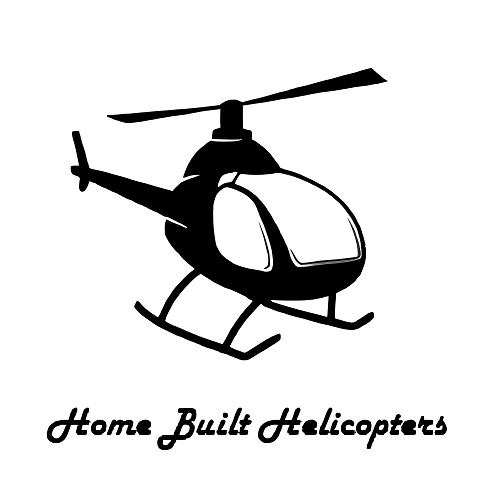
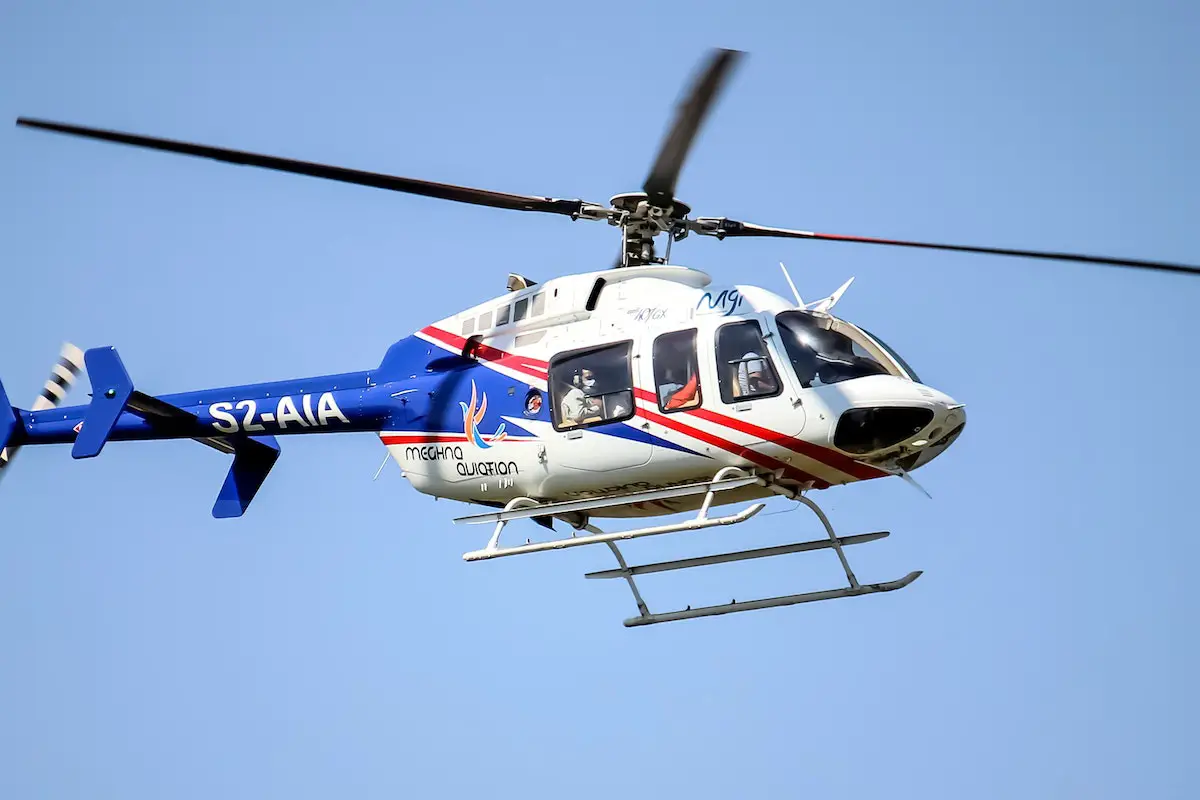
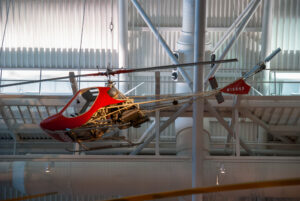
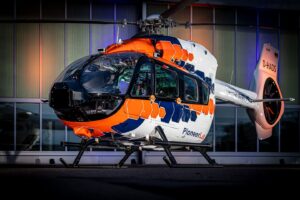

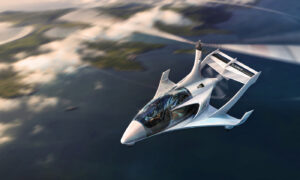
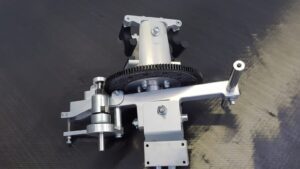
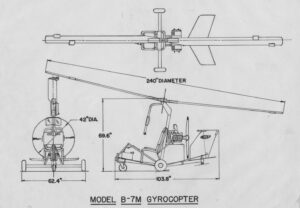
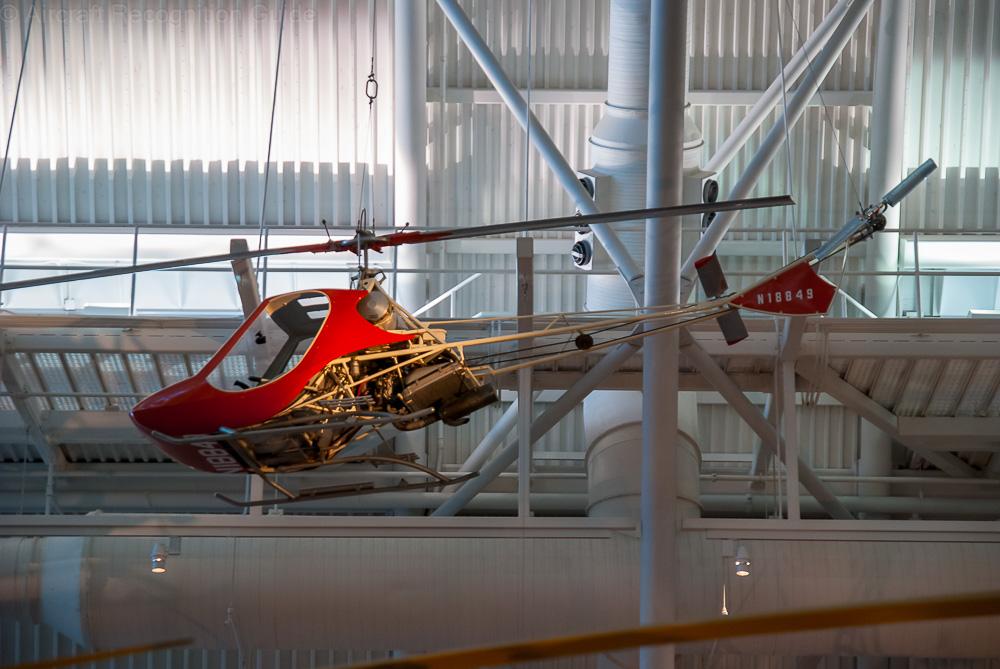


Leave a Reply